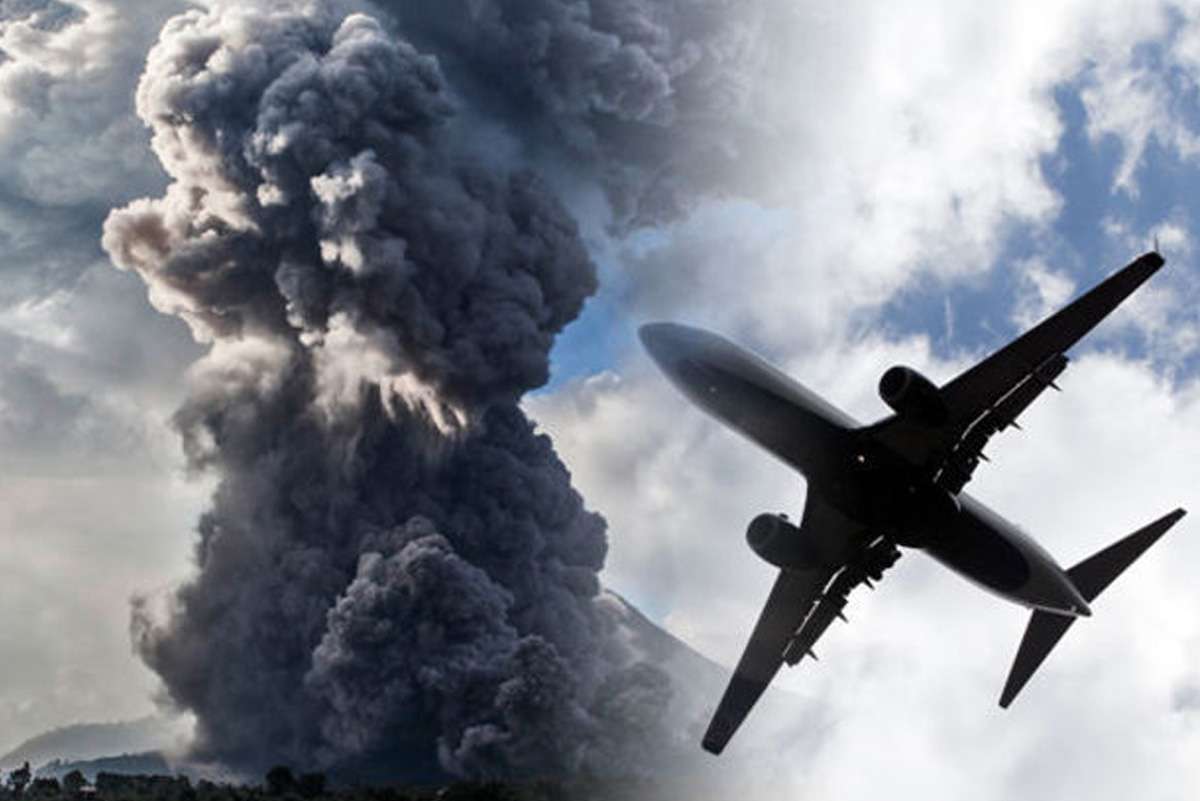Volcanic eruptions affect aviation and flying in many ways. On a global scale, it affects trans-continental flights. Several intercontinental airliners have run into trouble by unwittingly flying into volcanic ash clouds, whereupon their engines have stalled.
The biggest disruption to air travel in recent history was the eruption of Iceland’s Eyjafjallajokull in 2010. which shut down European air space for close to two weeks. The most recent has been the volcanic eruption of Mount Agung which forced to shut down the main airport of Bali.
The most famous run in between a plane and a volcano occurred on June 24, 1982, when British Airways Flight 009 inadvertently flew through an ash cloud emitted by an eruption Mount Galungung. At the time, the Boeing 747 was at an elevation of 37,000 feet on its way from Kuala Lumpur to Perth, when an electric discharge was noticed that enveloped the plane’s engines in an odd glow. Almost immediately, the jet’s engines began to fail and the cabin was filled with a sulfuric smoke. Soon, all four engines failed, leaving the Boeing 747 jet to glide along while the pilots worked to restart them. The plane lost 25,000 feet of altitude before the pilots got the engines restarted at 12,000 feet. It was later discovered that molten ash had clogged up the aircraft’s four engines. By the time the plane reached 12,000 feet, the ash had cooled, solidified, and broken off; allowing the engines to start again.
In 1989, KLM experienced a similar incident when one of its 747-400s suffered quadruple engine failure after flying through an ash cloud emitted by Mount Redoubt in Alaska. The flight was able to restart its engines after descending to 13,000 feet and making an emergency landing in Anchorage
The principal damage sustained by aircraft flying into a volcanic ash cloud is abrasion to forward-facing surfaces, such as the windshield and leading edges of the wings, and accumulation of ash into surface openings, including engines.
Abrasion of windshields and landing lights will reduce visibility, forcing pilots to rely on their instruments. However, some instruments may provide incorrect readings as sensors (e.g., pilot tubes) can become blocked with ash. Ingestion of ash into engines causes abrasion damage to compressor fan blades.
The composition of most ash is such that its melting temperature is within the operating temperature (>1000°C) of modern large jet engines. The degree of impact depends upon the concentration of ash in the plume, the length of time the aircraft spends within the plume and the actions taken by the pilots.
Critically, melting of ash, particularly volcanic glass, can result in accumulation of resolidified ash on turbine nozzle guide vanes, resulting in compressor stall and complete loss of engine thrust. Volcanic gases, which are present within ash clouds, can also cause damage to engines and acrylic windshields, although this damage may not surface for many years.
In 2010 Eyjafjallajökull in Iceland erupted with wide ranging effect on air-travel. What made this volcanic activity so disruptive to air travel was the combination of all these
Ash clouds can be hard to spot for pilots. At high altitudes, volcanic ash does not look like the dense cloud currently seen above any active volcano , be it Eyjafjallajökull or even Mount Agung. The best visual indicator is St Elmo’s fire, a glow around the plane caused by the static of the particles carried by the ash.
The first action recommended at that point is to simply turn the plane around hoping to escape the area quickly.

